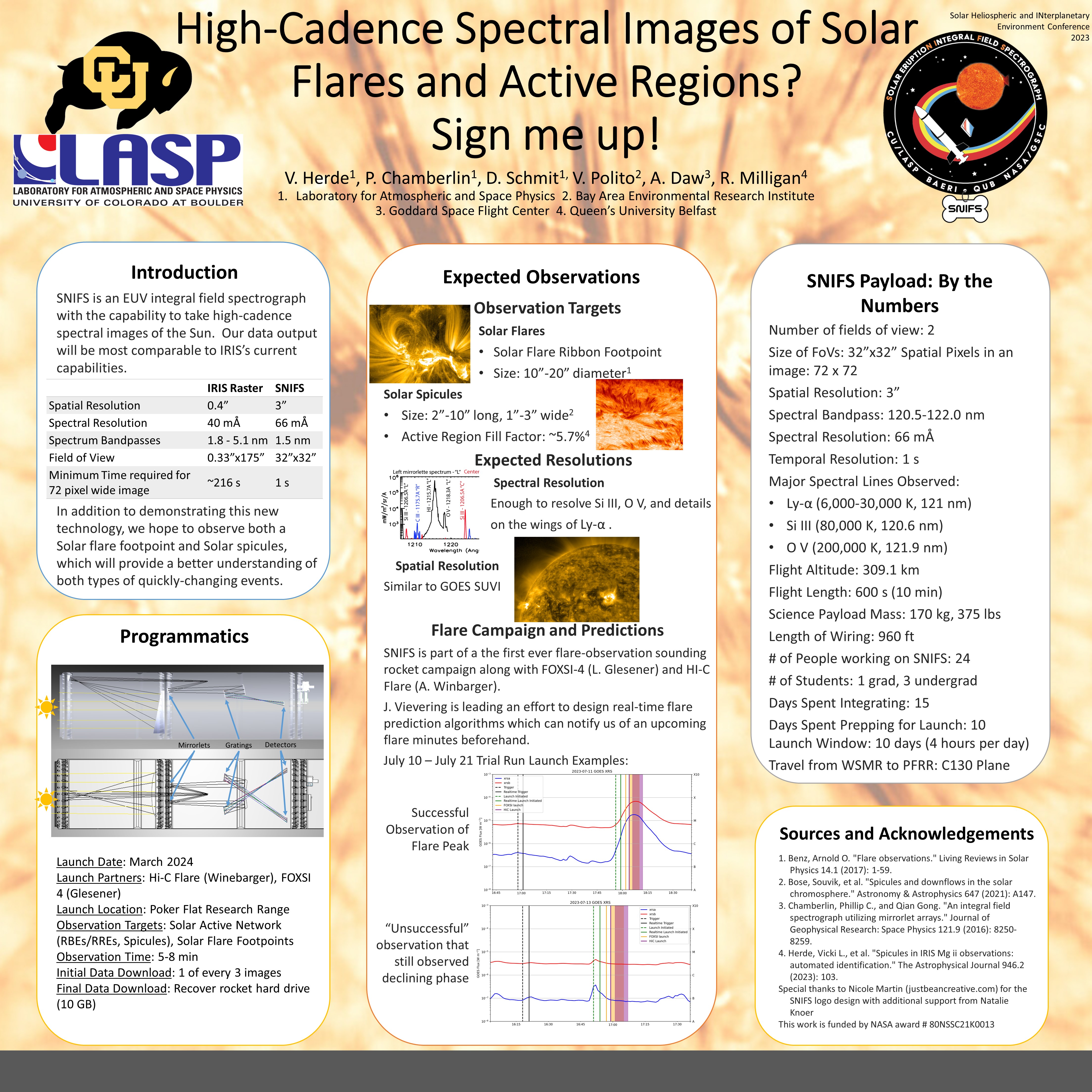Authors: Vicki Herde (LASP), Phil Chamberlin (LASP), Don Schmit (CIRES), Vanessa Polito (BAERI), Ryan Milligan (QUB), Adrian Nigel (GSFC)
The Sun’s chromosphere has always been a difficult region to study due to its variety of optically thick and optically thin emission and absorption lines, and also the fact that much of its light is emitted at extreme ultraviolet wavelengths which cannot be observed from the ground. When studying its plasma and energy dynamics, it is useful to have multiple cotemporaneous data types, such as 2D spatial and spectral. The Interface Region Imaging Spectrograph (IRIS) satellite is currently providing high-quality 2D spatial and spectral data which has improved our understanding of the Sun by leaps and bounds. While the instrument is versatile, its ability to study the spatial extent of fast-changing events such as flares or solar spicules is limited by its single-slit spectrometer design. As a solution to this, we have proposed and are building the Solar eruptioN Integral Field Spectrograph (SNIFS), a new type of integral field spectrometer which will be able to gather images with 2 spatial dimensions and 1 spectral dimension centered around the Hydrogen 1 emission line, all taken at a 1 second time cadence which is an order of magnitude faster than current capabilities. From this spatial and spectral datacube, we will be able to derive the 3D position and velocity of plasma in the chromosphere, specifically focused on some of the fastest-changing events on the Sun. SNIFS will be launching on a sounding rocket in March 2024 alongside Hi-C Flare and FOXSI-4 as part of NASA’s first-ever Solar Flare Sounding Rocket Campaign. This poster discusses the engineering design and build of the SNIFS instrument and rocket.


